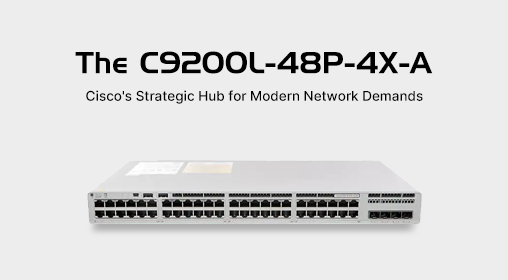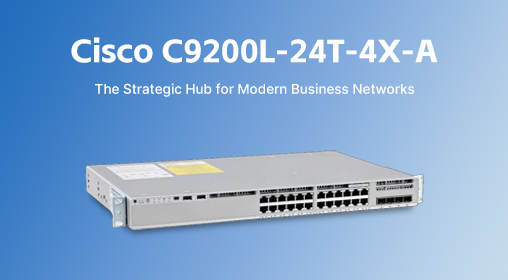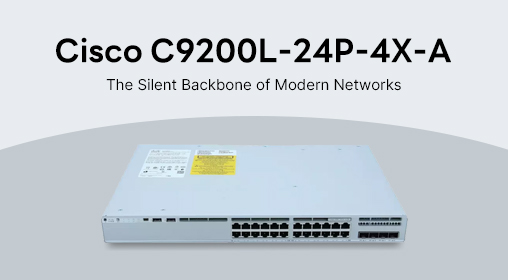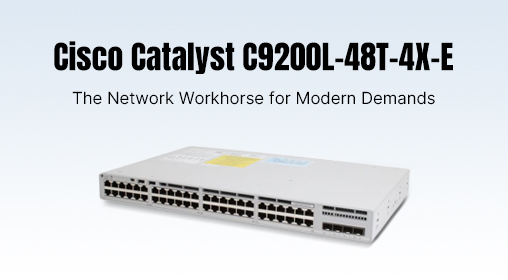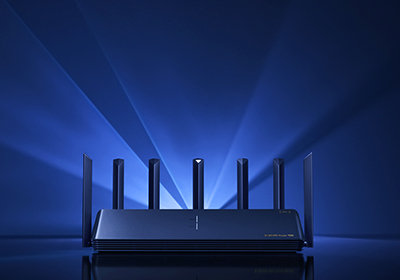














Choosing between the Cisco Nexus 3064TQ-10GT and the 3172PQ-10GE is like selecting the foundation for a high-performance network—each offers a distinct approach to 10GbE switching. The 3064TQ caters to environments where copper cabling reigns supreme, while the 3172PQ is built for the high-density, fiber-rich data center. Having handled both switches, the difference is immediately apparent; one prioritizes accessibility and cost-effectiveness, the other leans into uncompromising port density and low-latency performance.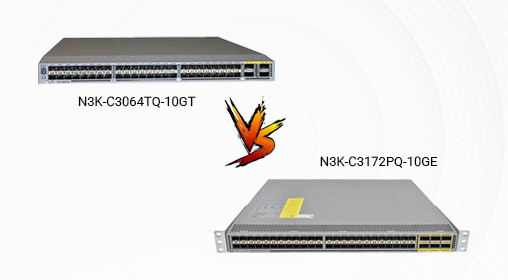
Pulling the N3K-C3064TQ-10GT from the rack, you're greeted by a standard 1RU form factor designed for top-of-rack deployments. Its front panel is dominated by 48 x 10GBASE-T RJ-45 ports, offering familiar connectivity for servers and devices equipped with standard copper network interfaces. This design prioritizes ease of use, especially in environments where Cat6/Cat6a cabling is the norm. In the same position, the N3K-C3172PQ-10GE presents a more specialized front. It packs 48 x SFP+ fiber optic ports alongside 6 x QSFP+ uplink ports, all designed for SFP+ transceivers. The lack of RJ-45 ports signals its purpose: maximum performance in a fiber-based infrastructure. The build quality on both is industrial-grade Cisco, but the 3172PQ's port arrangement is clearly optimized for data centers where space is at a premium and fiber is the backbone. The 3172PQ is also a heavier unit, reflecting its more complex internal architecture designed for higher aggregate throughput.
Where these switches truly diverge is in their internal architecture and performance capabilities. The N3K-C3172PQ-10GE boasts a significantly higher switching capacity of 1.4 Tb/s, which is necessary to handle the potential load from all 48 SFP+ ports running at full tilt plus the 40GbE uplinks. The N3K-C3064TQ-10GT, while still performant, is built to a different standard, with its architecture supporting the demands of 10GBASE-T connectivity. The 3172PQ includes 4GB of RAM to manage its extensive forwarding tables and features, while the 3064TQ is equipped for robust Layer 3 routing protocols like OSPF and BGP. Both run Cisco's NX-OS, but the performance headroom for intensive workloads is noticeably greater on the 3172PQ model.
Core Technical Specifications
|
Parameter |
N3K-C3064TQ-10GT |
N3K-C3172PQ-10GE |
|---|---|---|
|
Form Factor |
1RU |
1RU |
|
10G Port Configuration |
48 x 10GBASE-T RJ-45 |
48 x SFP+ |
|
Uplink Ports |
Typically 4 x QSFP+ (40G/100G) |
6 x QSFP+ (40G/100G) |
|
Switching Capacity |
Information not available in search results |
1.4 Tb/s
|
|
Forwarding Rate |
Information not available in search results |
Information not available in search results |
|
MAC Address Table |
Information not available in search results |
288K
|
|
Jumbo Frame Support |
9KB+ |
9,216 Bytes
|
|
Power Supply |
Typically dual, hot-swappable |
Information not available in search results |
|
Max Power Consumption |
Lower relative to SFP+ switches |
293W (max)
|
|
Cooling |
Variable speed fans |
4 fans, 76.7 dB max noise
|
The feature sets, while both running NX-OS, cater to different operational realities. The 3064TQ-10GT's 10GBASE-T ports offer a key advantage in simplicity—they can auto-negotiate down to 1Gbps and connect directly to a vast array of equipment without requiring separate transceivers. This drastically reduces the cost and complexity for networks with many 1G/10G devices. The 3172PQ-10GE, with its native SFP+ interfaces, is the performance king. It supports a wide range of optics, including cost-effective direct-attach cables (DACs) for short-distance, high-speed links. Its six QSFP+ uplinks provide immense flexibility for spine-leaf architectures, allowing for 40G or 100G connections to the core. Both platforms offer comprehensive L3 features—OSPF, RIP, VRRP, and extensive QoS and ACL policies—but the 3172PQ is engineered for environments where these features are pushed to their limits, such as in large-scale virtualized data centers or high-frequency trading networks.
From a user experience perspective, the choice often comes down to the physical layer. Network administrators deploying the 3064TQ often describe a smoother, more straightforward rollout. The ability to use ubiquitous copper cabling means quicker server replacements and less reliance on specific, sometimes costly, SFP+ transceivers. The thermal and power profile of the 3064TQ is also generally more forgiving in mixed-density server rooms. In contrast, working with the 3172PQ is a hallmark of a high-stakes data center operation. Engineers who manage these switches appreciate the raw density and performance but must contend with the intricacies of fiber management, ensuring compatibility of optics, and a higher acoustic footprint—the fans can generate up to 76.7 dB under load, which is significant. The initial setup of a 3172PQ-based network requires more planning but results in a cleaner, higher-performance fabric.
When it comes to value, the calculation isn't just about the sticker price. The N3K-C3064TQ-10GT often presents a lower initial investment, especially when factoring in the zero cost for transceivers when using copper cables. Its true value shines in cost-sensitive deployments where existing cabling can be reused, or where the maximum reach of 100 meters for 10GBASE-T is needed. The N3K-C3172PQ-10GE, while commanding a higher price, justifies it through superior performance metrics like lower latency and higher switching capacity. Its value is maximized in all-fiber environments where the use of DACs or affordable optics for short reaches can keep total cost of ownership competitive. For organizations that anticipate future growth or are building a high-performance spine-leaf fabric, the 3172PQ's six QSFP+ uplinks offer a more future-proof investment.
Assessing stability and reliability reveals both platforms are built to Cisco's high standards, but with different operational emphases. The 3172PQ-10GE, with its robust 1.4 Tb/s fabric and components rated for data center duty, is designed for 24/7 operation under heavy load. Its higher power consumption and notable fan noise are trade-offs for this relentless performance. The 3064TQ-10GT, by virtue of its 10GBASE-T technology, inherently generates more heat per port, which can be a consideration in poorly cooled environments. However, in a well-designed rack, it runs quietly and efficiently. Both offer redundant, hot-swappable power supplies, a critical feature for mission-critical applications. The 3172PQ's architecture is simply over-provisioned for extreme scenarios, making it the more resilient option under sustained, peak load conditions that would challenge other switches.
Each switch serves a distinct master. The N3K-C3064TQ-10GT excels in general-purpose server access layers, cost-conscious upgrades, and environments where copper cabling is a fixed standard. Its limitations surface when very low latency is paramount or when connectivity beyond 100 meters is required. The N3K-C3172PQ-10GE is the undisputed choice for high-frequency trading, high-performance computing clusters, and as a dense leaf switch in a modern data center. Its constraints include a higher acoustic output and a dependency on SFP+ optics, which adds a layer of cost and complexity.
The decision ultimately hinges on your network's DNA. The N3K-C3064TQ-10GT is the pragmatic workhorse for the real world, where ease of use and cost control matter. The N3K-C3172PQ-10GE is the specialist's tool, engineered for scenarios where every microsecond and every bit of bandwidth counts. There is no universal winner—only the right tool for the specific environment you are building today.
